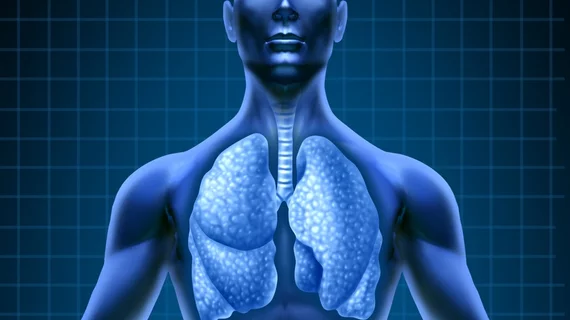Catheter-directed therapy (CDT) is being used to treat pulmonary embolism (PE) more and more by healthcare providers, according to new research published in the Journal of Vascular and Interventional Radiology. In fact, CDT procedures for PE were used 10 times more often among Medicare patients in 2016 than in 2004.
"CDT allows for the physical removal of clot via entrapment, suction, and/or the delivery of lytic agent directly into the clot via a thrombolysis catheter,” wrote lead author Edward L. Gayou, MD, MPH, department of radiology at the Ohio State University Wexner Medical Center in Columbus, and colleagues. “Although more studies are needed to elucidate the exact role of CDT, recent data suggest that a catheter-directed approach may offer multiple potential benefits over systemic therapy, including more targeted delivery of therapeutic lytic dose, more rapid relief of right heart strain, and lower risk of hemorrhagic complications.”
The authors explored a 5% sample of Medicare claims data from 2004 to 2016, focusing on ICD-9 and ICD-10 codes relevant to the diagnosis of PE. Overall, PE patients represented 391.1 claims per 100,000 Medicare fee-for-service (MFFS) beneficiaries in 2004 and 511.3 claims per 100,000 MFFS beneficiaries in 2016, an increase of more than 30%. The use of CDT to treat those patients increased as well, jumping from 0.46 services per 100,000 MFFS beneficiaries in 2004 to 5.06 per 100,000 MFFS beneficiaries in 2016. While PEs were treated with CDT 0.1% of the time in 2004, that increased 10-fold to 1% in 2016.
Interventional radiologists performed more CDT procedures for PE per year for both mechanical thrombectomy and placement of lysis catheters for thrombolysis than any other specialists, except for the year 2010 when vascular surgeons performed more. By 2016, interventional radiologists were performing 70% of all CDT procedures for PE. Interventional cardiologists were responsible for 18%, and vascular surgeons performed 12%.
Gayou et al. also compared the compound annual growth rate (CAGR) of these procedures with other tasks regularly carried out by interventional radiologists. CDT procedures for PE had a CAGR of 20%, much higher than the CAGR of pulmonary artery catheter placement (6.2%) and pulmonary angiography (4.7%).
“These results may serve as an impetus for the interventional radiology community to make CDT a research priority so that its exact role in PE management can be better defined,” the authors wrote.

